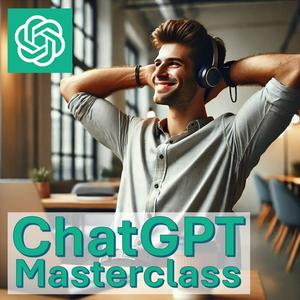Tracking Meeting Effectiveness and Decision-Making Patterns Using AI #S14E7
This is Season 14, Episode 7: Tracking Meeting Effectiveness and Decision-Making Patterns Using AI
Meetings are essential for collaboration and strategy execution, but how do you measure if they are actually productive? In this episode, we’ll focus on how to use ChatGPT's advanced voice mode to track meeting effectiveness, identify decision-making patterns, and improve future meetings.
By the end of this episode, you’ll know how to analyze meetings in real time, gather insights from discussions, and use AI-generated feedback to continuously refine your meeting structure.
Why Track Meeting Effectiveness?
Most teams don’t actively evaluate the quality of their meetings. But ineffective meetings result in:
Wasted time on discussions that don’t lead to decisions.
Unclear action points, leading to poor execution.
Repetitive discussions, where the same topics keep coming up.
Decision-making bottlenecks, where no one takes ownership.
With AI-powered real-time tracking, you can ensure meetings are actually productive, focused, and result-driven.
Step-by-Step Guide: Using ChatGPT to Track Meeting Effectiveness
Step 1: Set Up ChatGPT’s Role Before the Meeting
Before the meeting starts, activate ChatGPT advanced voice mode by:
Opening the ChatGPT mobile app and tapping the headphone icon.
Selecting the advanced voice mode for interactive real-time feedback.
Placing your phone on the table or connecting it to a speaker so everyone can hear.
Then, give ChatGPT clear instructions on how to track meeting effectiveness.
Example instruction:
"ChatGPT, we are having a strategy meeting. Your role is to track the discussion, summarize key points, and provide insights when asked. Please do not speak unless we give you a command. When we ask, provide an analysis of discussion efficiency, action items, and decision-making speed."
Step 2: Monitoring the Meeting in Real Time
As the meeting progresses, use ChatGPT to track effectiveness with voice prompts like:
👉 To check if discussions are productive:
"ChatGPT, how much time have we spent on this topic, and have we made a clear decision?"
👉 To see if discussions are repetitive:
"ChatGPT, have we discussed this topic before in previous meetings? If yes, summarize the past conclusions."
👉 To track participation balance:
"ChatGPT, based on the discussion so far, have the same people been speaking, or has everyone contributed?"
This helps teams avoid circular discussions, ensure all voices are heard, and speed up decision-making.
Step 3: Identifying Decision-Making Patterns
At the end of the meeting, use ChatGPT to analyze how decisions were made.
Prompt examples:
👉 To review decision speed:
"ChatGPT, how long did it take us to finalize key decisions today?"
👉 To track decision clarity:
"ChatGPT, summarize the decisions we made and identify if any were left unresolved."
👉 To assess follow-through from past meetings:
"ChatGPT, based on previous meeting summaries, did we follow through on our past action items?"
This allows you to spot inefficiencies, such as slow decision-making or lack of follow-up, and fix them in future meetings.
Step 4: Getting AI-Generated Meeting Feedback
After the meeting, you can ask ChatGPT for a structured effectiveness review.
👉 Final meeting analysis prompt:
"ChatGPT, please summarize today's meeting. Include key discussion topics, decisions made, time spent per topic, and any unresolved points."
If you want AI to suggest improvements, you can ask:
"ChatGPT, based on today’s discussion flow, what could we improve in our next meeting?"
This ensures meetings continuously get more efficient over time.
Your Action Plan for Today
Set up ChatGPT advanced voice mode before your next meeting.
Use the provided prompts to track discussion effectiveness, participation, and decision-making speed.
At the end of the meeting, ask ChatGPT for a structured summary and review areas for improvement.
By doing this, your meetings will become faster, more focused, and more results-driven.
In the next episode, we’ll discuss how to build an AI-powered strategy meeting archive, making past meetings instantly searchable and accessible. Stay tuned.
